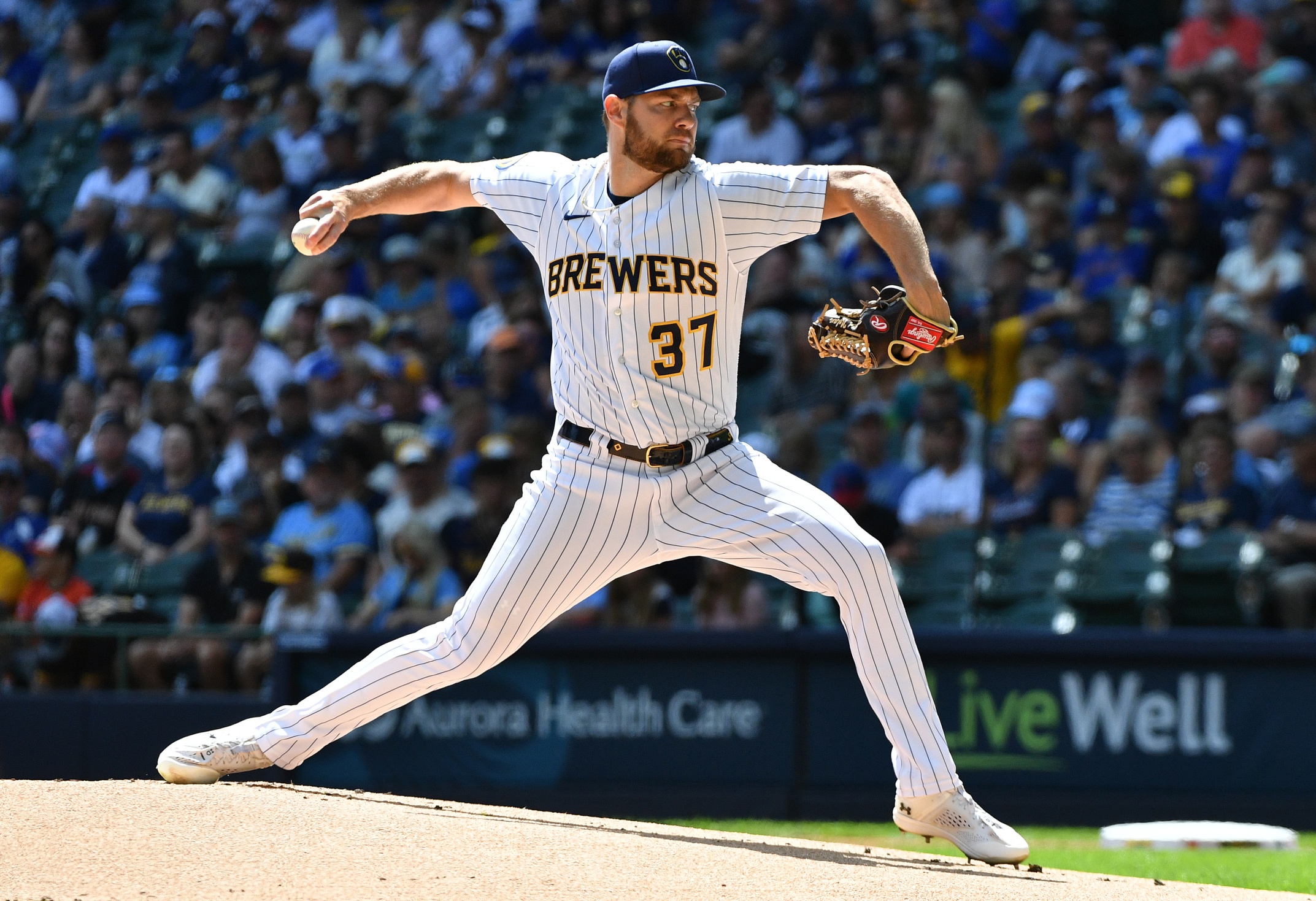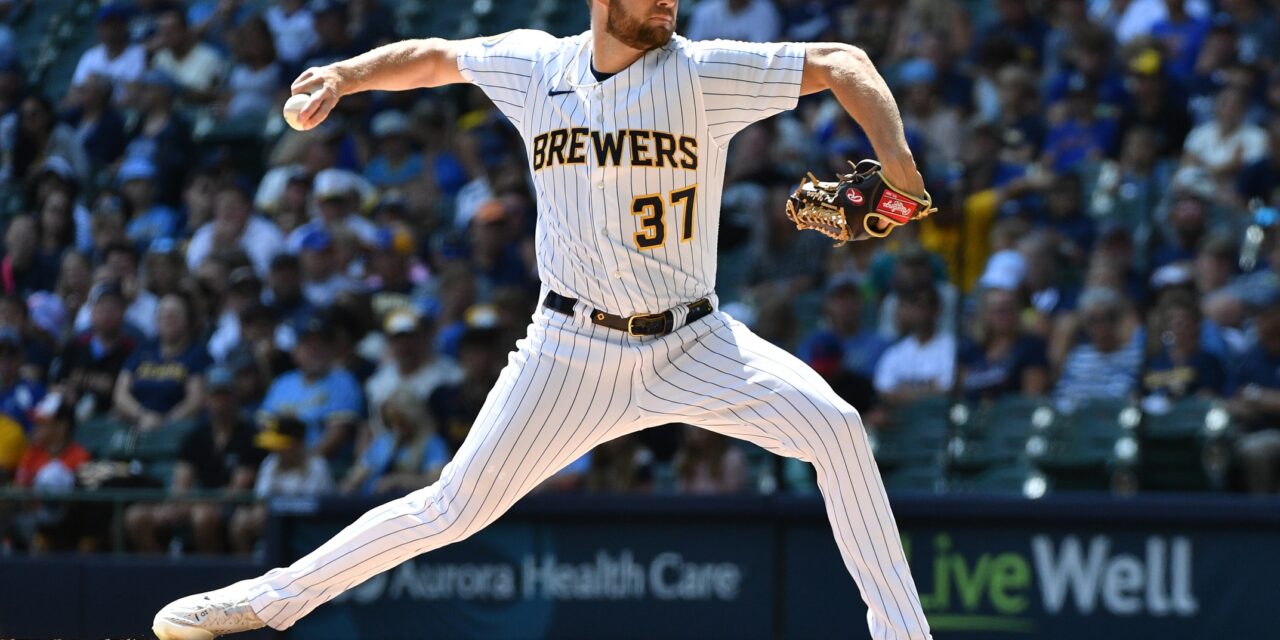ADRIAN HOUSE, RHP
Position: RHP B/T: R/R
Age: 30 (02/02/1993)
2023 Traditional Stats: 23 G (21 GS), 8-5, 111 1/3 IP, 4.12 ERA, 96 SO, 34 BB, 1.392 WHIP
2023 Advanced Stats: 105 ERA+, 3.99 FIP, 7.8 K/9, 2.7 BB/9, 20 K%, 7.1 BB%, 46.3 GB%, 0.8 bWAR

Michael McLoone-USA TODAY Sports
RUNDOWN
The Mets made a crafty trade on Wednesday, adding Adrian Houser and Tyrone Taylor for prospect Coleman Crow. By adding Houser for Crow, who just underwent Tommy John surgery and wasn’t selected in the Rule 5 draft, the Mets obtained a pitcher who is a proven MLB starter and can eat innings, which are two things the Mets need this season.
Houser was drafted by the Houston Astros in the second round of the 2011 MLB draft out of Locust Grove HS (Locust Grove, OK). Houser was traded on July 30, 2015, with three other prospects, including Josh Hader, to the Milwaukee Brewers for Carlos Gomez and Mike Fiers. Houser made his MLB debut in as a September call-up that same season. He would spend the entire 2016 season in Triple-A, going 3-7 with a 5.25 ERA. In June of 2018, Houser cemented his role as an MLB pitcher for the Brewers, pitching for them every subsequent season.
One thing you can always expect from Houser is to pitch – notching over 100 innings pitched in every season minus the COVID-shortened 2020 season, having as many as 26 starts, which happened in the 2021 season. During that season, he pitched to a 3.22 ERA, going 10-6. While he does not have the typical back-of-the-rotation high inning totals, he takes the mound and posts average results. The 2023 seasons saw Houser hit the IL twice, with a groin strain and then some elbow discomfort, but still managed 21 starts.
CONTRACT
Houser is projected to receive $5.6 million dollars in his final year of arbitration, so at worst, the Mets picked up a back-of-the-rotation starter for much lower than the going rate. He will be a free agent following the 2024 season.
DEEPER LOOK
Houser’s profile shows a pitcher who gets ground balls at an above-average clip, doesn’t get hit hard and gives up some home runs. Whether that is a product of his home park or pitch selection is to be seen.
Houser will use a four-pitch mix, throwing his fastballs over 67.5% of the time over his career. Houser relies primarily on a sinker, which he locates on the outer half of the plate to righties, and inside to lefties. He follows that with a four-seam fastball that he will throw up and into righties/up and away to lefties. He pairs that with his slider, which he throws around 11.6% of the time, followed by a curveball and a changeup, which historically he has thrown more often, but the 2023 season saw him drop his curveball usage from 11.7% to 8.7% and his changeup usage from 9.5% to 3.9%. The 2023 season saw Houser’s best BB% of his career at 7.1, but it was also paired with his highest HardHit% at 46.3%.
Houser has seen a velocity drop, going from 94.3 MPH in 2022 to 93.4 MPH in 2023. That may be attributed to the higher HardHit% with the drop in velocity, but him veering more into the lane of a two-pitch pitcher seems like the more likely outcome. In addition, while making 21 starts, Houser only went six or more innings six times, making him a candidate to only go around the batting order two times. Is there potential for him as an opener, possibly allowing him and another starter to handle those games similar to how Ryan Yarbrough was used frequently for the 2021 Tampa Bay Rays? Absolutely. Having value as someone who will take the ball every fifth or sixth day cannot be underestimated.
GRADE: B+
Adding rotation depth was always going to be a priority for the Mets, and with the David Peterson hip injury, it became even more paramount. For the Mets to obtain an MLB starter with average results (and a 4th outfielder) for a pitcher who will not contribute to the organization at any level until possibly June or July is a great job by David Stearns. If Houser can provide the Mets the ability to go to a six-man rotation, it may continue to help Kodai Senga keep his routine in order, and if the Mets sign Yoshinobu Yamamoto, it could give them a solid rotation, then only relying on Tylor Megill/Jose Butto/Joey Lucchesi as a sixth starter/rotation depth.
Will this stop the Mets from looking for more starting pitching? No. If last season proved anything, it is that you need significant depth to continue to compete through the long season. Without that depth, the Mets were left with starting pitchers who had poor results in Triple-A and were hoping for the best.
If Houser falters and doesn’t have a season similar to his career norms, the cost is minor. At worst, Houser can potentially be a swingman, similar to the role Trevor Williams filled in the 2022 season.















